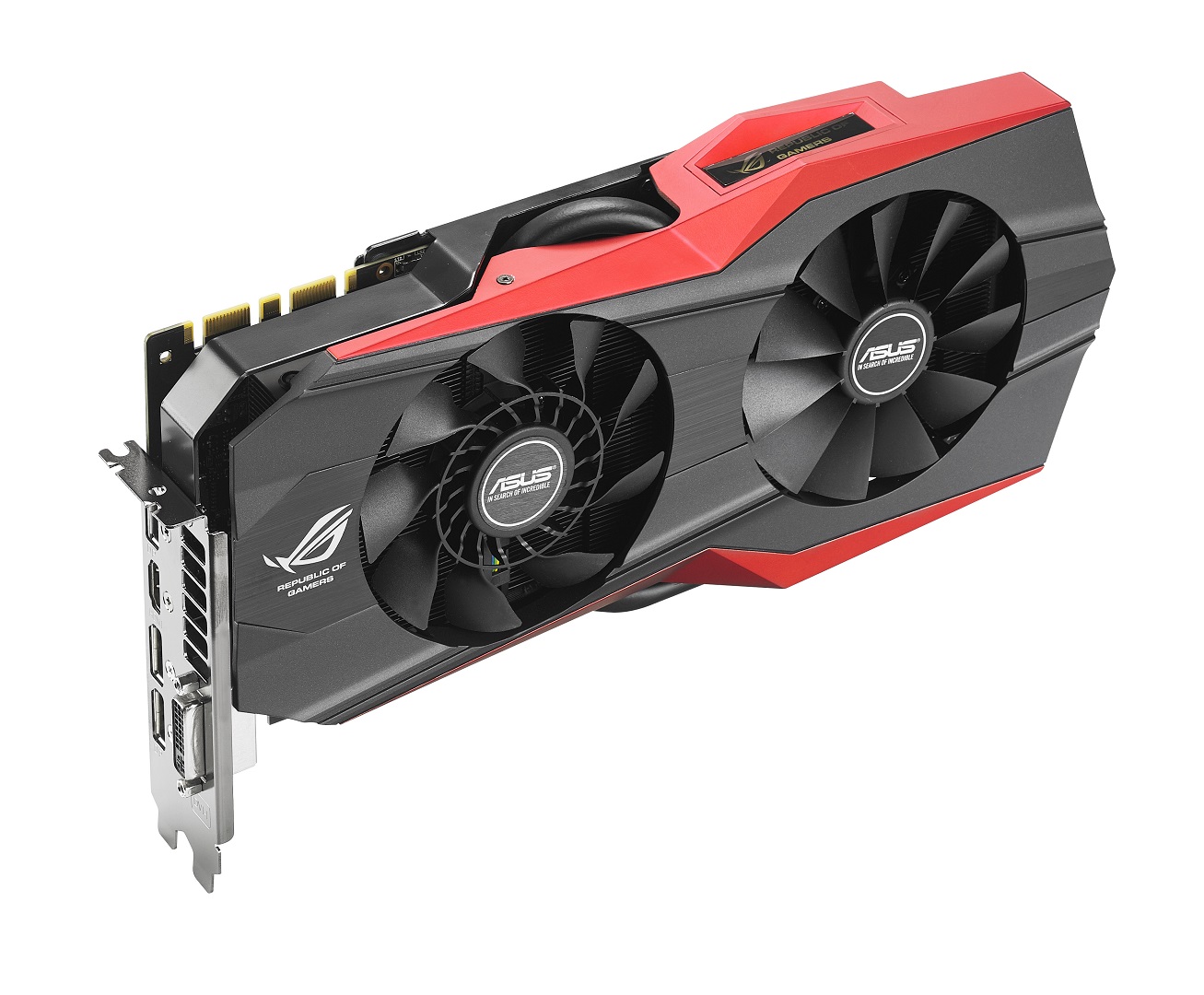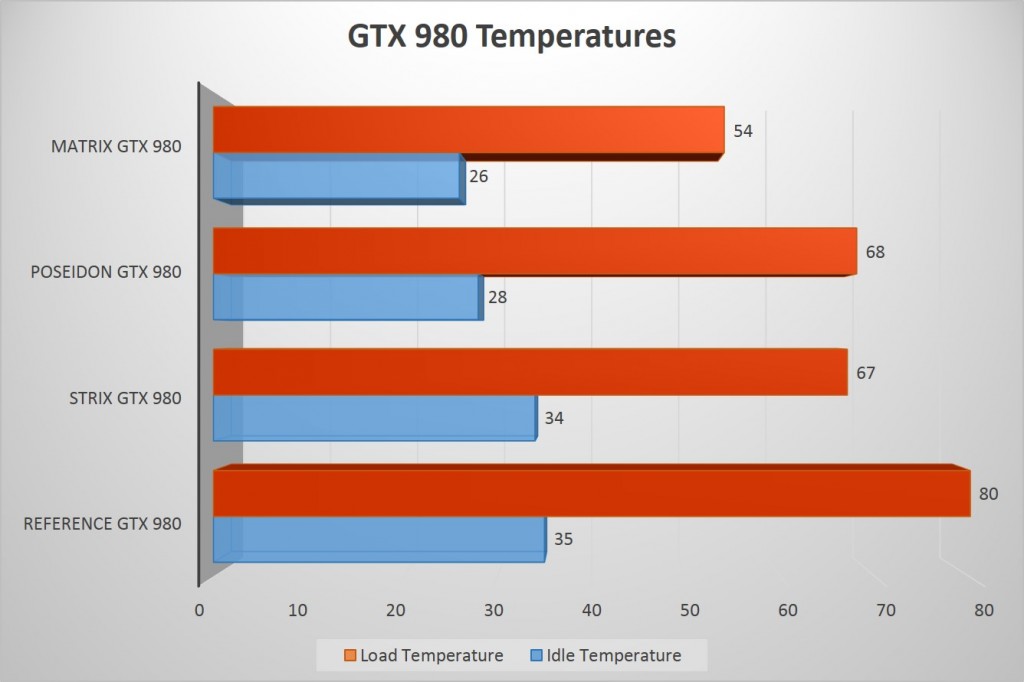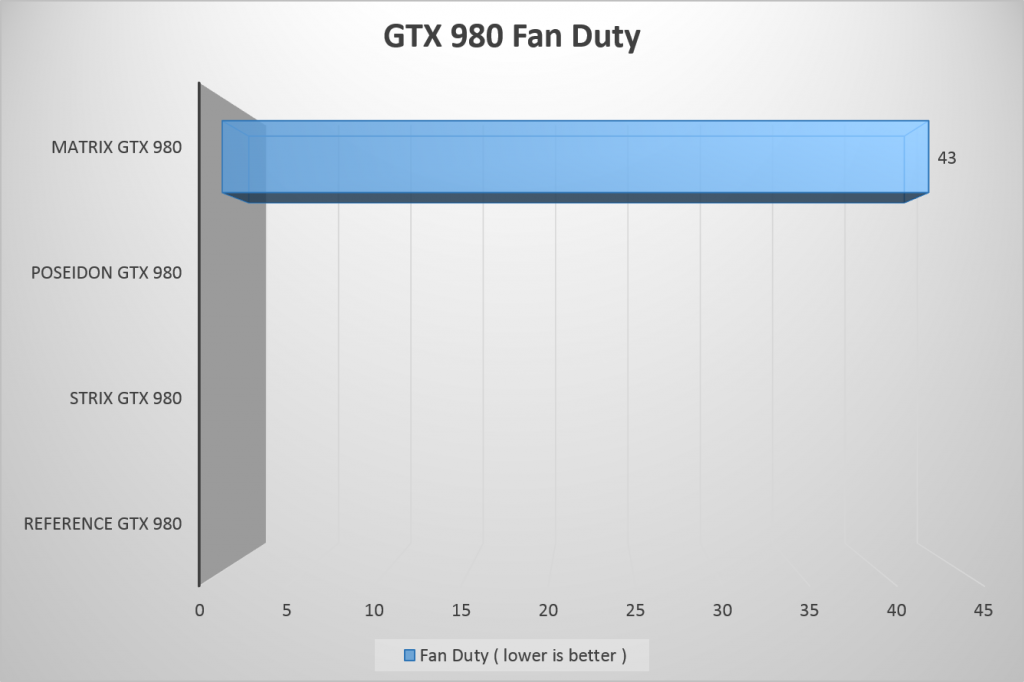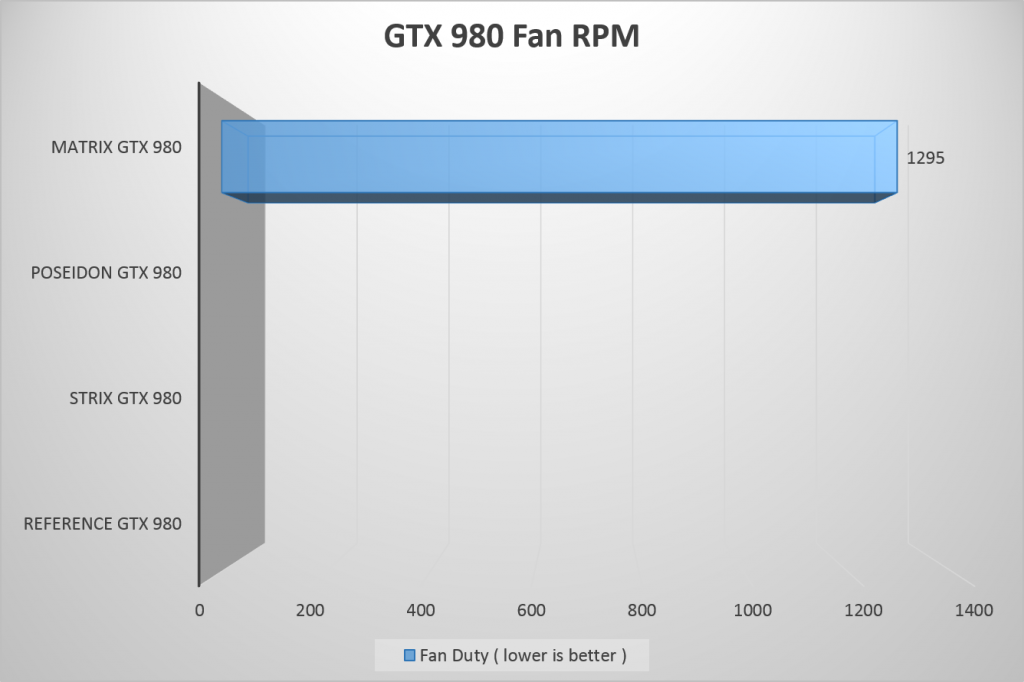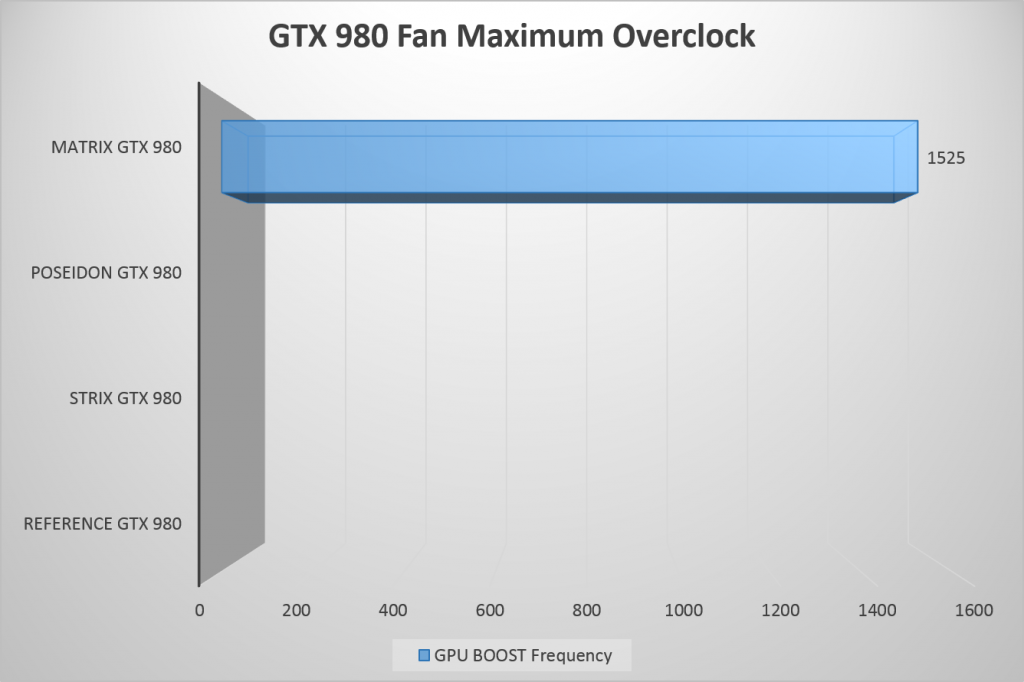I have been busy as usual here in the PCDIY labs. On one hand I have just about every type of component going through all kinds of tests while on the other hand needing to focus on wide range of content all with content develop for 2015. With all that on the table you think it would be easy to lose track or have waning interest on a number of products. Thankfully for you guys that has definitely not been the case as these products have some seriously interesting and impressive designs, features and functionality. One of the components I have been getting up close and and personal with has been the ASUS ROG GTX 980 MATRIX PLATINUM. In short, it is one of the best GPUs I have ever had the experience of testing. Featuring a full non reference design featuring a ultra high quality and performance oriented PCB and VRM along with a massive heat sink and fan assembly as well as more tweaking and tuning options than you might be ready for this card is primed for enthusiasts. It total sum of design, features and functionality pulls you into its MATRIX of cool, quiet and overclocked performance.
General design detailing
The MATRIX is a full non reference graphics card. What does that mean? It means that from top to bottom the card offers up PCB, VRM ( power components ), power topology and layout along with a heat sink and fan assembly that are all custom. The design was developed by ASUS’ graphics RD team with the goal of ensuring a superior performing product including temperatures, acoustics and reliability as well as power related performance metrics.One you look at the MATRIX you can easily see this is not your run of the mill reference GTX 980. It’s fully customized and high performance design is readily apparent. It has a striking aesthetic that is aggressive and distinctive.
Ultimately all of these improvements net you a card that is cooler, quieter and faster than the reference GTX 980!
Before we jump into the specifics of the design lets highlight the key specifications
Specifications
| Model name | MATRIX-GTX980-P-4GD5 |
| GPU | NVIDIA® GeForce® GTX 980 |
| Bus standard | PCI Express® 3.0 |
| Direct X supprot | 11 & 12 |
| Video memory | 4GB GDDR5 |
| GPU boost Clock | 1342 MHz |
| GPU base Clock | 1241 MHz |
| Memory clock | 7010 MHz (GDDR5) |
| Memory interface | 256-bit |
| DVI output | 1x Native Dual-link DVI-I |
| HDMI output | 1 x Native HDMI 2.0 |
| HDCP compliant | Yes |
| DisplayPort | 3 x Native DisplayPort |
| Adapters/cables bundled | 1 x PCIe power adapter cable, 1 x ROG Metal Sticker |
| Software bundled | ASUS utilities and driverGPU Tweak |
| Dimensions | 11.7″ x 6″ x 1.6″ |
So with the specs out of the way we can focus on the specialized features and functionality. As the MATRIX is targeted at enthusiasts who not only want cooler, quieter and faster performance from their graphics card but equally care about tweaking, tuning and monitoring the MATRIX comes packed to the gills with features and functionality that perfectly align with the needs of the graphics card enthusiast.
Special features and functionality
- Advanced monitoring – The MATRIX offers specialized ICs that when referenced via GPU TWEAK allow for extensive monitoring of the graphics card. Included items are GPU temperature, Memory temperature, PCB / board temperature and much more. In total there are 17 points of monitoring offered that can all be logged realtime.
- Hardware voltage monitoring – The MATRIX offers dedicated voltage read points allowing for quick, easy and accurate reading of voltages via a multi meter.
- Extensive voltage and VRM control – With specialized PWM, VRM and IC implementations the MATRIX offers the most extensive level of voltage and VRM adjustment of any graphics card. These extensive options allow for more granularity in how overclocking is handled and gives tweakers the most options in how to attempt to drive and sustain stable overclocked frequencies.
- Controllable voltage and VRM parameters
GPU voltage
Memory voltage
PEX voltage
3.3 voltage
Load line calibration
VRM clock frequency
Power target utilization
- LN2 ( unlocked ) VBIOS – The MATRIX offers a specialized VBIOS that when unlocked allows for unrestricted voltage and power target adjustment. This extreme setting offers up a much higher range of voltage and power target values to allow overclockers to better achieve aggressive overclocks. This is especially the case with frequencies that exceed 1500 MHz.
- Extreme overclocking hardware support – The MATRIX supports specialized hardware accessories that allow for advanced hardware based overclocking control. Specifically the MATRIX is designed to support VGA Hotwire & OC Panel and the MATRIX daughter board. These all allow for extended voltage controls allow with with disabling of OCP and other extreme OC values.
- Memory defroster – A specialized hardware implementation that warms the PCB surrounding the memory. This helps to mitigate the build up of frost when aggressively overclocking the memory and GPU under LN2 or LHe.
- Safe mode – A quick and easy way to revert the card to factory specifications with the touch of a button.
- LED load display – A real time display that varies its color by the load percentage ( % ) monitored on the GPU.
- PCIe power LEDs – Two sets of LEDs are on the back of the card directly underneath the PCIe power. These allow for quick and easy visual confirmation that power is connected as well as being fed to the GPU.
Beyond these there are quite a bit more but we will cover them more in depth especially in relation to the non reference PCB and VRM as well as the heatsink and fan assembly.
General aesthetic –
The card comes in classic ROG red and black with the shroud featuring a striking two tone central color that is balanced by two red accents at the top and bottom of the shroud. The card has an outward and immediate striking look that infers an aggressive but refined design. Small touches show the attention to detail brought to the card. These include a matte black heat sink assembly as well as a full metal back plate with correctly oriented lettering which is printed outwards. This will bring a smile to the faces of PCDIY enthusiasts who have a clear side panel on their chassis. Looking more closely subtle but distinctive aesthetic improvements have been incorporated into the design of the MATRIX, the most notable is the black heat sink assembly.While relatively small in its visual weight it shows the attention to detail in the total visual aesthetic. Many enthusiasts will appreciate the extent of consideration in this regard. This step adds cost and complexity to production of the MATRIX. The shroud encasing the PCB, heat sink and fan assembly also features a small LCD which is designed to display GPU load in real time via a five stage LED load indicator. Bringing the design all together when looking at the MATRIX dead on you have a sense of performance and speed in the same way looking at Ferrai Enzo or Lamborghini Aventador.
Display connectivity –
The GTX 980 supports a robust level of functionality and connectivity. If you are looking for a display type and specification then this card has it. Everything from standard dual monitor to triple monitor surround to 3D VISION to 4K and even G-SYNC are all supported. The trio of DP ports is ideal as DP allows for G-SYNC surround as well as 4K surround and any other type of surround configuration. Beyond DP it is also the like all GTX 980 it that it is the first GPU to offer HDMI 2.0 support. Users who are still using legacy digital displays and need support of DVI will also be covered and should they need additional connections can do a low cost DP to DVI adapter or DP to DVI cable. All the way around it great to see the robust display out offered by this GPU.
Digital PWM with high performance & high quality VRM
Moving beyond the general external design we move into the heart of the non reference design elements on this card which include the PCB, VRM and much more. Externally the first indicator of the non reference design is dual fan heat sink and fan assembly along with with the enhanced PCIe power connectivity. The card features dual eight ( 8 ) pin PCIe power connections more than enough especially when compared to the dual six ( 6 ) pin implemented on the reference or even the GTX 980 STRIX another ASUS non reference graphics card that features an eight ( 8 ) & six ( 6 ) PCIe power design. While not needed for air or water cooling for users looking to push the GPU and card to limits under extreme forms of cooling such LN2 and LH will benefit.
Gaining access to the inside of the MATRIX is a fairly simple affair. All that is required is for 4 screws to be unscrewed and pull away the heat sink and fan assembly portion of the card form the PCB / GPU. Be careful when pulling away the heat sink and fan assembly, two internal leads are present running from the shroud to the board. One is for the fan control and the other for the LCD that displays real time load values. Once you gain access to the inside you can begin to see the attention to detail and quality of design. The cards PCB is on a beautiful matte black PCB which exudes quality. The topology and lay out looks precise and you cannot help to be impressed by the immediate presence of so many power components in the VRM section.
The PCB and VRM is area that the MATRIX truly distinguishes itself even when compared to the high performance full non reference designs of other ASUS cards like the GTX 980 STRIX and GTX 980 POSEIDON. The MATRIX has been built with the perspective of improving every aspect of the power delivery and power components with the goal of having the card not be a bottleneck. Additionally improvements to those components have extended, enhanced and improved voltage thresholds, efficiency, amperage ratings and more.
The MATRIX specifically features a number of impressive non reference elements
A custom and newly developed PCB that leverages a new production process. This new process reduces power noise and improves and increases the delivery of electric current vertically. In regards to the phase array it also is considerably improved when compared to the reference card GTX 980 as well as that of other non reference GTX 980’s.
The MATRIX power delivery compared to the reference ( and STRIX ).
MATRIX: 12+2 (G+M)
STRIX: 8+2 (G+M)
Reference: 4+1 (G+M)
Additionally the inductors feature a higher A ( amperage ) rating.
MATRIX: 40A for each phase with the card being equipped with 12 for the GPU.
Reference: 35A for each phase with the card being equipped with 4 for the GPU.
Looking throughout the PCB you will also see a difference in the capacitor implementation. The reference design implements POSCAPS as opposed to the MATRIX which features ultra premium, high threshold & Hi / Lo temp tolerance as well superior capacitance 10K rated PL capacitors. Below I have some of the specification difference but the main differences can in the specification improvement which includes improved 5X the lifespan of a traditional capacitor. Beyond the improvement in operating lifespan it is further enhanced by considerably improved tolerances in regards to temperatures including much colder as well as much hotter temperatures.
The reference card does not use PL CAPs, it uses POSCAPs.
MATRIX: 470uF poscap * 6pcs + 820uF PL cap *14pcs ( 10000hr )
STRIX: 470uF poscap * 6pcs + 820uF PL cap *13pcs ( 5000hr )
Reference: 470uF poscap *14pcs
Below the VRM heat sink which helps to ensure great cooling for the mosfet & driver power stages we have another considerable upgrade compared to the reference and non reference cards. The MATRIX is equipped with ultra premium IR mosfet drivers which offer outstanding thermal efficiency and improved thermal dissipation along with impressive operating efficiency as well as high A ratings. Working with those IR drivers are TI based N-MOSFET power blocks. This combination has been implemented with a purpose built design focus of non compromising power delivery for the GPU especially when overclocked.
Tying this advanced VRM together is the implementation of a digital PWM for power delivery and control. While the phrase overbuilt may be used to an extent for this VRM and PWM design, the MATRIX has been given a much needed outlet via the LN2 mode option on the card. While potentially risky for air users, water coolers and extreme cooling enthusiasts will appreciate the unlocked voltage as well as unlocked power target which will allow for much greater GPU BOOST frequencies to be reached. In short for anyone wondering whether this card is built for overclocking it is not just built for it, more specially it is purpose built with it in mind.
Ultra high performance finned heat sink and fan assembly featuring direct contact copper with a 10mm heat pipe and dual dust proof fans
Looking at the large aluminum finned heat sink assembly painted black it is hard to not be impressed by the sheer size of the heat sink. Compared tot he reference design heat sink assembly it offers up considerably more heat dissipation surface area.
Reference – 1850
DirectCU II – 4112
The increases comes out to be 2.2x larger. This additional surface area when combined with the five ( 5 ) continuous direct contact copper heat pipes, which include a 10mm heat pipe easily handle the heat output of the GTX 980 GPU even when overclocked. In fact the temperatures are not only cooler than that of the reference card but even the ASUS GTX 980 STRIX. Beyond their primary purpose of heat dissipation the fans features some impressive design benefits as well. These include a dust proof fan design which essentially means that both fan feature a dual sealed hub assembly. This improvement can extend operating lifespan and ensure superior performance by greater than 25%. The double sealed design helps to protect the bearings and hub assembly from dust, debris and dander. Additionally one fan the primary fan is a specially designed Cool Tech fan designed for downward firing airflow as well as radial exhaust airflow. This design helps to provide outstanding thermal performance but additionally helps to exhaust hot air away from the heat sink assembly and push toward expelling it from the back of the chassis through exhaust airflow. Those looking for cool graphics card will fine that the cooling solution easily handles the load whether it stock or overclocked.
Software – GPU TWEAK – One stop shop for tweaking, tuning, monitoring & overclocking
GPU TWEAK is ASUS’ internally developed graphics card utility. For those that have not used it, it is a stright forward light weight application that has been developed to specifially leverage the speailzied hardware designs and IC featured on cardds such as the MATRIX. This is important as some users may try applications like EVGA Precision X or MSI Afterburner and find they do not have support for the specilzied ICs that allow for the wide range of ajdustment parameters offered on the MATRIX.
Opening up the tutlity we have alot to work with starting of with the monitoroign. GPU TWEAk has a wide range of options in how the monitoring widnows is display. Users can also select which items they want to be actively monitored. This is an area that MATRIX shines in that it offers up 17 mointoring values! On the voltage side of things the MATRIX is also extremely rich offering up four voltage ranges for adjustment as well as load line calibration and VRM clock. Helping users along with the adjustment ranges are also color coded values as well as syned adjustment values such as frequency to voltage for users who are less knowledge. GPU TWEAK helps to bring out everything the MATRIX has to offer. While it will require patience and experation due to the wide range of options and how they may affect your GPUs overclock it is great to see this level of flexiblity to be able to eek out as much out of the GPU as possible.
Thermal Performance & Fan Operating Values
Improved temperatures are one of the biggest reasons a gamer and enthuiast considers a non reference graphcis card. Int his regard the MATRIX does not disapoint. The ultra large heatsink and fan assembly easly and effecitvely handles heat dissipation which is further improved and enhanced by the dual fan design.
Comparing the MATRIX not only to the reference but other ASUS GTX 980 non reference cards and the MATRIX comes out on top easily. While the POSEIDON and STRIX offer very good thermal performance with considerably reduced temperatures compared to the reference the MATRIX offers a drop in temperature approaching 25 degrees! Equally as important though is an evaluation of the fan duty and corresponding RPM. This helps us to measure the speeds at which the cards operate at helping to provide a clearer picture in relation to acoustics.
After spending some quality time with the MATRIX you come away impressed with how cool and quiet the card is. The performance it offers in these two respects is even more impressive when you consider that the MATRiX is overclocked compared to the reference but still manges to be much cooler and quieter not to mention faster.
Overclocking – Moar MHzzzzz!
If the MATRIX is built for one thing even more than cool and quiet operation it is for overclocking. The card brings the most extensive level of tweaking and tuning for a graphics card I have seen. Extensive tweaking, tuning and monitoring has long been the hallmark for MATRIX cards and the latest iteration is no different. With that noted it is important to keep in mind there are never any guarantees in overclocking ( unless you are buying a a pre overclocked card ) like the MATRIX and running it at its defined overclocked frequency out of the box. Beyond that you have to deal with the reality of margins and variance between GPUs and a little thing called the silicon lottery. All things considered the GTX 980 has shown impressive and more importantly consistent overclocking margin. The majority of GPU’s I have tested have not had an issues reaching 1,400 MHz on the GPU BOOST clock and 7,600 MHz on the memory clock. During my testing I worked with four different samples and found this all the cards reaching these expected overclocks. Generally moving in defined frequencies of 1450 will produce frequencies in the 1475+ range. At this point and with defined frequencies greater than 1450 you will begin to add voltage to stabilize or extend your overclock. With the MATRIX we will able to extend this to a 1,500 MHz defined overcloked.
As for the memory I had expectations that it would in the range of 7,600 MHz to 7,800 MHz. Once I settled on 8,200 MHz I tested it extensively and verified the performance increase was present. This is important as at times you can scale memory frequencies to higher speeds but error is resolivn so many issues that you get worst performance. Once I re ran my tests i was extremely excited to see both this GPUs running this 8GHz+ frequency.
Overclocking Tutorial for GTX 980 MATRIX
For those of you who are not satisfied for the overclock already pre programmed and verified stable that comes with the MATRIX we have made it easy to push beyond that should you take on the challenge of overclocking your GTX 980 MATRIX further. Below you will find a quick outline and the key steps to quickly overclocking your GTX 980 MATRX to a 1,400 MHz GPU BOOST clock and 7,600 MHz memory clock.
Wrap up & Conclusion
Once I finish wrapping up my intital time with the MATRIX I can easily say this card has impressed me in all the ways I wanted and more equally expected. Additionally I was also suprised. First and foremost the quality the card is built with is outstanding. This card is built like the proverbial tank with top shelf components and design. While not aboslutely required it is nice to know at a more expensive price point each aspect of design has been improved upon even when comapred to the already impressive and full non reference GTX 980 STRIX. I also love the fact that the capacitors and mosfet / drivers offer superior efficiency, thermal dissipation and overall improvement to their respesctive thresholds. Outside of the improvements to the PCB, VRM and power topology I was really impressive by the heatsink and fan assembly performance. The direct contact continous copper design with the 10mm heatpipe and two dust proof fans offer quite a bit better thermal dissipation that I expected when comapred to the similairy designed STRIX offering up temperature performance that was in our testing over 25 degrees cooler than the reference GTX 980 and around 15 degress cooler than the STRIX. When you add to that, that the MATRIX is still a quiet card is togh to ask for more. With that noted it does give yu more and I aprpeciate the depth of tweaking and tuning options allowed. About the only things I would like to see improved is the PCIe slot bracket gone to black like the beautifully painted black heatsink assembly as well as having the shroud be a metal shroud as opposed to a composite material. With that noted the MATRIX offers up extremely cooler and quiet operation out of the box overclocks and great overclocking. Considering it leaves more for those willing to take it to the next level via water cooling or extreme cooling its value for me is easily justified and advocated. I think many will have a hard time aruging that the MATRIX has earned the mantle through its attention to detail, design implementations and performance that is the ultaimte GTX 980.

